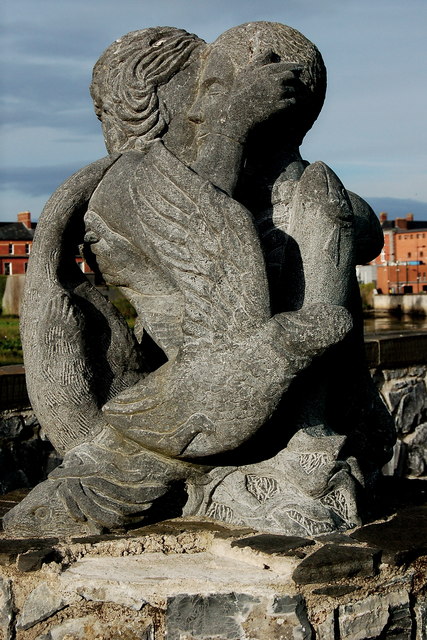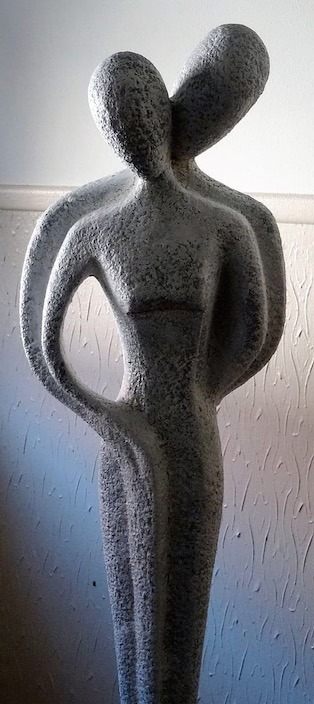by Lois Tverberg
Some Pharisees came to him to test him. They asked, “Is it lawful for a man to divorce his wife for any and every reason?” “Haven’t you read,” he replied, “that at the beginning the Creator ‘made them male and female,’ and said, ‘For this reason a man will leave his father and mother and be united to his wife, and the two will become one flesh’? So they are no longer two, but one. Therefore what God has joined together, let man not separate.” (Matthew 19:3-6)
 Sometimes we can better understand Jesus’ teaching when we recognize how he and others of his time read the Scriptures. Oftentimes, this may not be the same way we read them. One example is in the teaching of Jesus’ on marriage. When asked about whether divorce should be permitted for any reason, he quotes Genesis 1:27: “So God created man in his own image, in the image of God he created him; male and female he created them.” To us, this verse doesn’t obviously connect to marriage, and also doesn’t relate to his quotation from Genesis 2:24, that a man will leave his parents and be joined to his wife.
Sometimes we can better understand Jesus’ teaching when we recognize how he and others of his time read the Scriptures. Oftentimes, this may not be the same way we read them. One example is in the teaching of Jesus’ on marriage. When asked about whether divorce should be permitted for any reason, he quotes Genesis 1:27: “So God created man in his own image, in the image of God he created him; male and female he created them.” To us, this verse doesn’t obviously connect to marriage, and also doesn’t relate to his quotation from Genesis 2:24, that a man will leave his parents and be joined to his wife.
However, when we examine how Jews at that time understood the creation of Adam and Eve, a connection begins to emerge. Genesis mentions the creation of mankind twice. In Genesis 1:26-27 it says:
Then God said, “Let us make man in our image, in our likeness, and let them rule over the fish of the sea and the birds of the air, over the livestock, over all the earth, and over all the creatures that move along the ground.” So God created man in his own image, in the image of God he created him; male and female he created them.
Later, Genesis 2 describes how God formed the man from the dust of the ground and then later formed the woman. At first these two creation accounts seem to disagree. Were both male and female created at the same time, as in 1:27, or was the man formed first and the woman afterward, as in chapter 2?
From before Jesus’ time, it was believed that when God first formed the human, he somehow molded both man and woman together in that person. Then, Eve was taken out of Adam since she existed before then too. The verse in chapter 1 that states that God created them “male and female” was understood to mean that each original human was both male and female.
While this seems like a stretch, the Hebrew text supports this in several ways. Before the creation of the woman, Adam is never referred to as a “man” but as ha’adam which means “the human.” It is only after Adam names Eve as ishah, “woman,” that he is referred to as ish, “man.” Also, when God “operates” on Adam, he takes out tzela echad—literally “one side” of him. The translation of tzela as “rib” occurs only here—everywhere else it refers to one “side” of something, like when poles were inserted each of the two sides of the ark in Exodus 37:3. A better description of the scene is that somehow God split Adam in half, and the other half was Eve. They perfectly complemented each other, because they were once one person.
If Jesus read Genesis 1:27 this way, it explains why he used the phrase that God “made them male and female,” to address God’s intentions for marriage. By connecting this verse to “for this reason a man will leave his father and mother and be united to his wife, and they will become one flesh,” Jesus creates a beautiful picture: that in marriage, a man and woman are reunited into one complete person, because that was how they were originally created in the first place.
Part of the beauty of the image is that the Hebrew verb in this line, dabaq, which is translated as “is united,” “cleaves,” or “clings” also refers to romantic love. After the prince of Shechem seduced Jacob’s daughter Dinah, he desperately wanted to marry her. Genesis 34:3 says that he “dabaq” (was deeply attracted to) her. He had fallen in love with her.
Putting all these ideas together within Jesus’ words, we find him saying that because God took apart one whole being to make Adam and Eve, that is the reason why men and women fall in love and want to become one being once again, both physically and spiritually. When they are united in marriage, God himself puts together what he separated at first, and no one should try to tear that apart.
 Photos: Fred Moon on Unsplash, Foto Pettine on Unsplash
Photos: Fred Moon on Unsplash, Foto Pettine on Unsplash

 Then, later, in Genesis 2, it says that God formed the man from the dust of the ground and then describes how woman was taken out of the first man. At first, these two creation accounts seem to be in disagreement – were both male and female created at the same time, as in 1:27, or was the man formed first and the woman later, as in chapter 2?
Then, later, in Genesis 2, it says that God formed the man from the dust of the ground and then describes how woman was taken out of the first man. At first, these two creation accounts seem to be in disagreement – were both male and female created at the same time, as in 1:27, or was the man formed first and the woman later, as in chapter 2?
